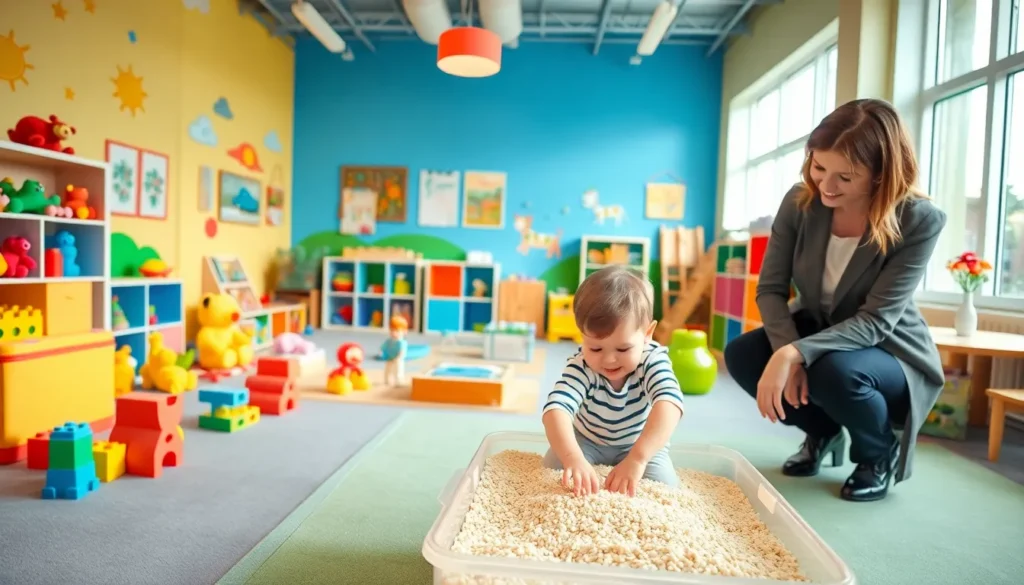Navigating the waters of co-parenting can be as tricky as trying to fold a fitted sheet. You think you’ve got it down, but then you realize how complicated it really is. During differing schedules, diverse parenting styles, and that not-so-subtle tension, a co-parenting agreement can save the day. This guide will unpack what a co-parenting agreement is, its benefits, and everything else you need to create a harmonious arrangement while keeping your sanity intact. Let’s jump into this essential parenting tool.
Table of Contents
ToggleWhat Is a Co-Parenting Agreement?

A co-parenting agreement is essentially a roadmap for parenting after a separation or divorce. It details how parents will share responsibilities, including custody arrangements, healthcare decisions, and education. This written document isn’t merely a formality: it’s a vital tool that encourages clear communication between parents. By setting ground rules and outlining expectations, it aims to keep the focus on the child’s best interests. No one wants to fall into the trap of ‘he said, she said’: a co-parenting agreement helps avoid that awkward game. Think of it as a contract between two parties with the shared goal of raising a child.
Benefits of a Co-Parenting Agreement
Creating a co-parenting agreement comes with a host of benefits:
- Clarity: By detailing roles, responsibilities, and expectations, the document removes ambiguity. Parents know exactly what is expected of them, leading to fewer misunderstandings.
- Consistency for the Children: Kids thrive on stability. With a co-parenting agreement, children can feel secure knowing what to expect from both parents.
- Reduced Conflict: Clear guidelines can minimize arguments. When everyone knows the rules, there’s less chance of disputes. Plus, you’ll spend less time in court and more time enjoying your kids.
- Better Communication: The process of drafting an agreement typically requires parents to discuss and negotiate. This can foster improved communication skills, something that’s essential for a successful co-parenting relationship.
- Legal Protection: In some cases, having a formal agreement can provide a layer of legal security, especially if conflicts arise in the future.
Key Components of a Co-Parenting Agreement
An effective co-parenting agreement typically includes several essential components:
1. Custody and Visitation Arrangements
This section outlines where the child will live and the schedule for visitation. Will it be joint custody, or will one parent have primary custody? Knowing who’s doing drop-offs and pickups can make life a lot smoother.
2. Financial Responsibility
Who’s footing the bill for school supplies, activities, and medical expenses? This section clarifies financial support, which helps avoid surprise costs down the line.
3. Decision-Making Authority
This covers who has the final say in major decisions like education and healthcare. It’s a crucial aspect that minimizes potential disputes.
4. Communication Guidelines
Set rules on how and when parents will communicate. Whether that’s via text, email, or monthly meetings, consistency is vital.
5. Modification Process
Life changes, and sometimes agreements need updates. Include a process for modifying the agreement, so you aren’t stuck in a rigid framework.
Creating a Co-Parenting Agreement
Drafting a co-parenting agreement involves multiple steps:
- Self-Reflection: Each parent should consider their goals and needs before coming together to write the document. This helps ensure that both parties feel heard.
- Discuss and Negotiate: Bring your ideas to the table. Listen to each other’s concerns, and be open to compromise. This isn’t a competition: it’s about what works best for the child.
- Draft the Agreement: Use templates available online for guidance, but make sure it suits your specific situation. Personalization matters.
- Seek Legal Consultation: It’s wise to have a lawyer review the agreement to ensure it complies with local laws and effectively addresses essential legal aspects.
- Sign and Share: Once finalized, both parents should sign the agreement and share copies with relevant parties, such as childcare providers.
Common Challenges in Co-Parenting Agreements
Even the best-laid plans can run into roadblocks. Here are some common challenges:
- Changing Life Circumstances: Job changes, relocations, or remarriages can all impact an agreement.
- Communication Breakdowns: Old habits can die hard. If good communication isn’t enforced, misunderstandings can re-emerge.
- Adapting to New Parenting Styles: Each parent might have different approaches to discipline and education: this can sometimes lead to conflicts that require renegotiation.
Modifying a Co-Parenting Agreement
Life doesn’t stand still, and neither should co-parenting agreements. Here’s how to modify:
- Open Communication: Approach the discussion in good faith. If you feel changes are necessary, express your concerns without accusations.
- Collaborate: Like drafting the initial agreement, both parents should be involved in the modification process. This ensures that each party feels respected.
- Document Changes: Whether it’s in writing or through an addendum, always make sure that modifications are documented and signed to maintain clarity and legality.




